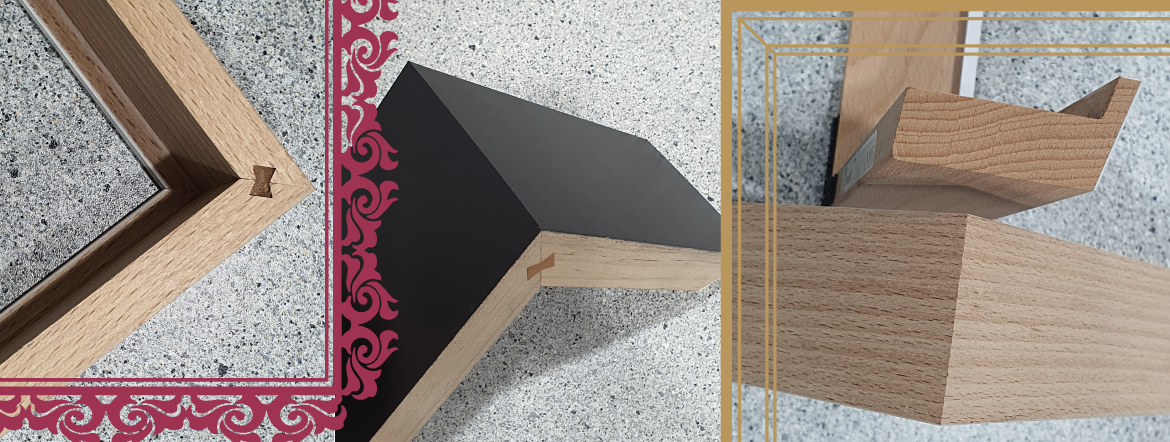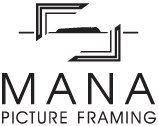Hoffmann Dovetail Joins
All custom frame shops use a V-nailer machine to join their frames. Gone are the days of using nails and putty to secure frame corners although in certain situations this method can still be useful, but is a rarity. Not all frame shops use a Hoffmann Dovetail machine, in fact I'm one of the very few in the country...

The V-nailer
A V-nail is a V shaped wedge that is either pneumatically driven or manually driven into the underside of the frame to secure and pull the corners together. The deepest V-nail is 15mm and in soft woods like pine you can drive two of these in, so achieving a 30mm deep V-nail join. In hardwoods like oak this can be challenging and a hardwood wedge is used. Hardwood wedges are only 12mm deep. PVA wood glue is also applied to the mitred corners to provide strength to the join and the V-nail assists in tightly securing the corners while the PVA glue cures.
This is perfect for 95+% of frame joins however all framers have trouble with corner joins from time to time. Sometimes if the profile of the frame is deep and narrow it can be difficult getting two wedges in and so there is more reliance on the glue to perform over time. If the frame is large it will also possibly have to support a large piece of glass which places stress on the structural integrity of the frame over time and occasionally corners begin to gap as a result of the glue breaking down. Heavy artwork can also challenge the integrity of the frames construction. In some situations the grain of the timber can push the V-nails outward and this results in some parting of the corners at the base of the join.
The Hoffmann
These are familiar challenges to all framers and was the motivation behind purchasing a Hoffmann dovetail joining machine in search of the ultimate join to address challenging jobs.
The Hoffmann routes a dovetail shaped channel into the mitred corners, which when brought together are glued and secured with a dual dovetailed key. This enables the channel to be routed up to 90mm into the frame and provides superior mechanical strength to the join over a V-nail join.
The Hoffmann join requires additional time to complete. Each frame profile requires specific calibration and sometimes different sized keyholes to be routed into the frame depending on the width of the frame. However for frames that require additional strength because of the framing package or you just want a perfect join because of the timber finish, then the Hoffmann is the answer. This is why this method of joining is more expensive than standard V-nail joins. If you're not sure which is right for you then please ask and Dean will provide you with the correct guidance for the best outcome.
